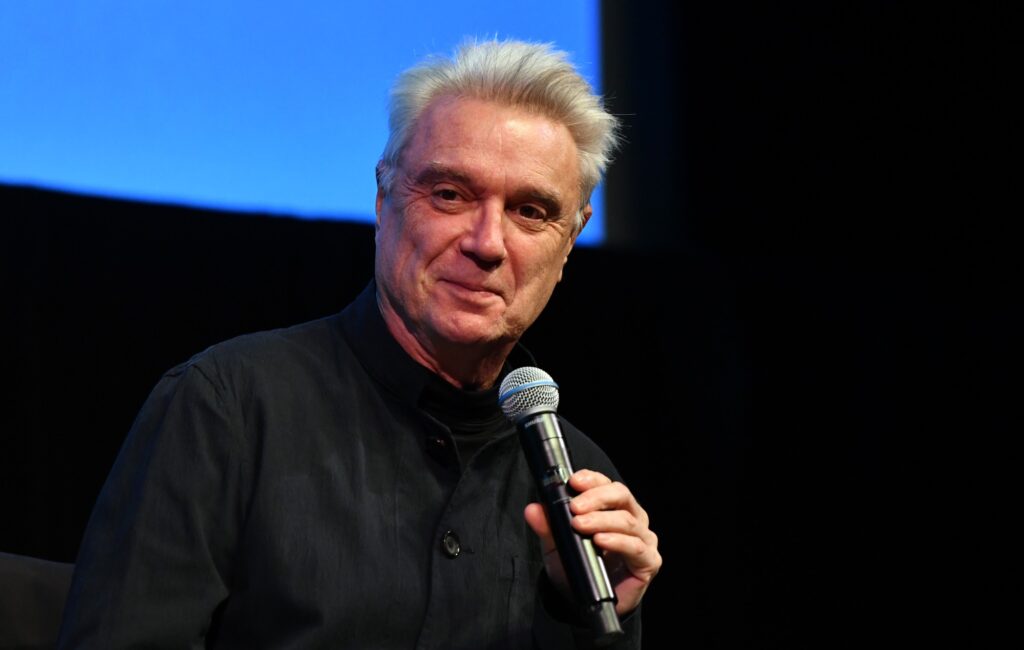David Byrne’s Who Is The Sky? reviewed: former Talking Head has fun wrestling with big conundrums

Such is the diversity of David Byrne’s projects since Talking Heads’ split in 1991, it can feel like no possible new endeavour is too far-fetched. Now that American Utopia and Here Lies Love have finished their runs, maybe it’s time for a Broadway musical about the turbulent childhood of Tristan Tzara? Or else an art photography book of textile factories in South Carolina? And surely there’s an album of New Orleans bounce to be made with Diplo and Big Freedia, and possibly a weekly column of recipes for the New York Times?
No possible new endeavour is too far-fetched…
Such is the diversity of David Byrne’s projects since Talking Heads’ split in 1991, it can feel like no possible new endeavour is too far-fetched. Now that American Utopia and Here Lies Love have finished their runs, maybe it’s time for a Broadway musical about the turbulent childhood of Tristan Tzara? Or else an art photography book of textile factories in South Carolina? And surely there’s an album of New Orleans bounce to be made with Diplo and Big Freedia, and possibly a weekly column of recipes for the New York Times?
The fact that none of these options seem particularly outlandish makes the relatively straightforward nature of his latest release all the more remarkable. Byrne’s first studio album since 2018’s American Utopia, Who Is The Sky? consists of 12 robustly performed pop songs, almost all of them under three and a half minutes in length. Though several contain stories – like the one about the Buddha scarfing down too many canapes – none serves a single overarching concept or occupies a role within a cross-platform project. Instead, they have been designed for humbler aims, whether it’s to amuse, to delight or to inspire movement of some sort.
That they only exist to make someone feel good is of course reason enough. Likewise, there’s no mistaking the joy Byrne and his team have poured into the creation of Who Is The Sky?, a work whose sense of effervescence is impervious to the existential quandaries that form another part of its modus operandi.
A testament to Byrne’s stubborn optimism…
Though the results are a testament to Byrne’s stubborn optimism, he admits many songs grew out of questions he had for himself about the value of making art amid the discouraging circumstances wrought by a global pandemic, the climate emergency and innumerable other catastrophes. Bits and pieces of songs developed in any case. Next came his enlistment of Ghost Train Orchestra, the New York chamber orchestra he discovered through the ensemble’s own 2023 tribute to NYC street composer Moondog.
Byrne also had the good fortune to meet Kid Harpoon aka Tom Hull, the English songwriter and producer best known for shaping Harry Styles’ solo output. With the producer and Ghost Train Orchestra on side, Byrne filled out the roster by soliciting additional percussion from The Smile’s Tom Skinner and longtime collaborator Mauro Refosco plus guest vocals by Paramore’s Hayley Williams and St. Vincent, Byrne’s foil on 2012’s Love This Giant.
While the music often brandishes the pillowy synths, crisp rhythms and mellifluous yacht-pop stylings that were hallmarks of Styles’ Harry’s House, Who Is The Sky? otherwise sees its creator rely on the strategies he applied to songs new and old for the stage incarnation of American Utopia. Ghost Train Orchestra’s arrangements and performances lend an appealing fullness to the openers “Everybody Laughs” and “When We Are Singing”, both of which boast the kind of simplicity that could make them instant sing-alongs for ticket-buyers should Byrne reconfigure the album for a future Broadway show. The lyrical expressions of self-awareness (“When we are singing I know the way we look”) also point to one of his favourite subjects, which is the inherent strangeness of being a human onstage making music.
Fresher fixations yield more intriguing results
Fresher fixations yield more intriguing results, like when he casts his eye homeward in “My Apartment Is My Friend”. “Between the walls and windows, we’re connected, me and you”, he observes in this buoyant ode to the comforts of home. A lustier, Latin-tinged duet with Williams, “What Is The Reason For It?” delves into the mysteries of love before concluding that the most perplexing questions (“What does it do when we’re asleep?”) must remain unanswerable, largely for our own good.
Elsewhere, Byrne offers more of the whimsical stories that have been part of his stock and trade since at least True Stories, the 1986 Talking Heads album and companion movie that arguably constituted his earliest stab at a multi-platform project. Alas, “I Met The Buddha At A Downtown Party” is marred by the thinness of its conceit, in which the reluctant deity explains why he had to “retire from that enlightenment biz” and stuff his face instead. While “Moisturizing Thing” benefits from its sprightly arrangement, the story here – about a skin-care treatment that renders the narrator far too youthful-looking to be taken seriously – feels better suited to a humour piece for The New Yorker.
Byrne’s singular perspective as a songwriter
Yet in its most engaging moments, Who Is The Sky? benefits greatly from Byrne’s singular perspective as a songwriter. It also shows how much more expressive he continues to grow even here in his eighth decade on Earth. His playfulness as a vocalist is especially evident on “A Door Called No”, which he delivers in a blend of drawl and croon as if he were some sadsack gunslinger in a Marty Robbins song. In the poignant “She Explains Things To Me”, he makes the most of a McCartney-worthy melody as he celebrates the many advantages of sharing a life with someone smarter than you.
An alternately skronky and jaunty piece that lands somewhere between no wave and Sondheim, “The Avant Garde” shows just how much fun Byrne can have when wrestling with those big conundrums, in this case what counts as art and who gets to decide. Whether it’s “deceptively weighty” or “profoundly absurd”, and whether it’s “whatever fits” or “doesn’t mean shit”, the man handily demonstrates that making art is absolutely worth the effort, especially if it’s his own.
Link to the source article – https://www.uncut.co.uk/reviews/david-byrnes-who-is-the-sky-reviewed-the-former-talking-head-has-fun-wrestling-with-big-conundrums-151207/
-
Master Play 30 Inch Electric Guitar,For Kids/beginner With Complete Starter Kit, 20 Watt Amp, 6 Extra String, Picks, Gig Bag, Shoulder Strap, Digital tuner, Cable, Wash Cloth Red$79,99 Buy product
-
Ortega LIZZY-PRO Bass – Mahagoni$499,99 Buy product
-
Donner DDP-100 88-Key Weighted Action Digital Piano, Beginner keyboard piano Bundle with Furniture Stand, Power Adapter, White$669,99 Buy product
-
Manhattan Drums Grooves – Large Authentic WAVE/Kontakt Samples/Loops Studio Library$14,99 Buy product
-
Image Line – FL Studio 20 Signature Edition Software$299,00 Buy product
-
YONTY 8-Hole Soprano Descant Recorder German Style Kids Music Flute with Cleaning Rod & Case Bag For School Student Home Entertainment – Black$9,99 Buy product












Responses